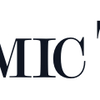"As we expected, the inflation projection was cut sharply by almost 60 basis points to 3.1%. Their observation aligns closely with our expectations — if you look at the trend between 2016 and 2019, whenever inflation drops to levels around 2% or below, there tends to be a sharp increase over the following 12 months. That’s exactly what the Governor also highlighted, and it's in line with our view that the headline CPI will edge back towards 4%," says Radhika Rao, DBS Bank.
We were discussing expectations earlier, but now the Reserve Bank of India has reiterated that they want to wait and watch the impact. However, one important point mentioned was about Q4, where inflation is expected to edge up, and more so in Q1 of the next financial year. What is your take on that?
Radhika Rao: Certainly. Heading into this meeting, we had expected two things: that the tone might be a bit more dovish and that there could be some room to cut rates. But the guidance turned out to be quite balanced — there were no specific cues suggesting that the central bank has left room for rate cuts. So, we will factor that into our own assumptions.
As we expected, the inflation projection was cut sharply by almost 60 basis points to 3.1%. Their observation aligns closely with our expectations — if you look at the trend between 2016 and 2019, whenever inflation drops to levels around 2% or below, there tends to be a sharp increase over the following 12 months. That’s exactly what the Governor also highlighted, and it's in line with our view that the headline CPI will edge back towards 4%.
Looking at their revised quarterly inflation trajectory, it does show a return to above 4%. We had expected them to frontload some easing, but based on today’s tone, it seems the bar has been set higher. They are not currently seeing any significant growth risks, either domestically or globally. Hence, this very neutral guidance on the path of future rate movements.
.png)
 17 hours ago
1
17 hours ago
1











 English (US) ·
English (US) ·